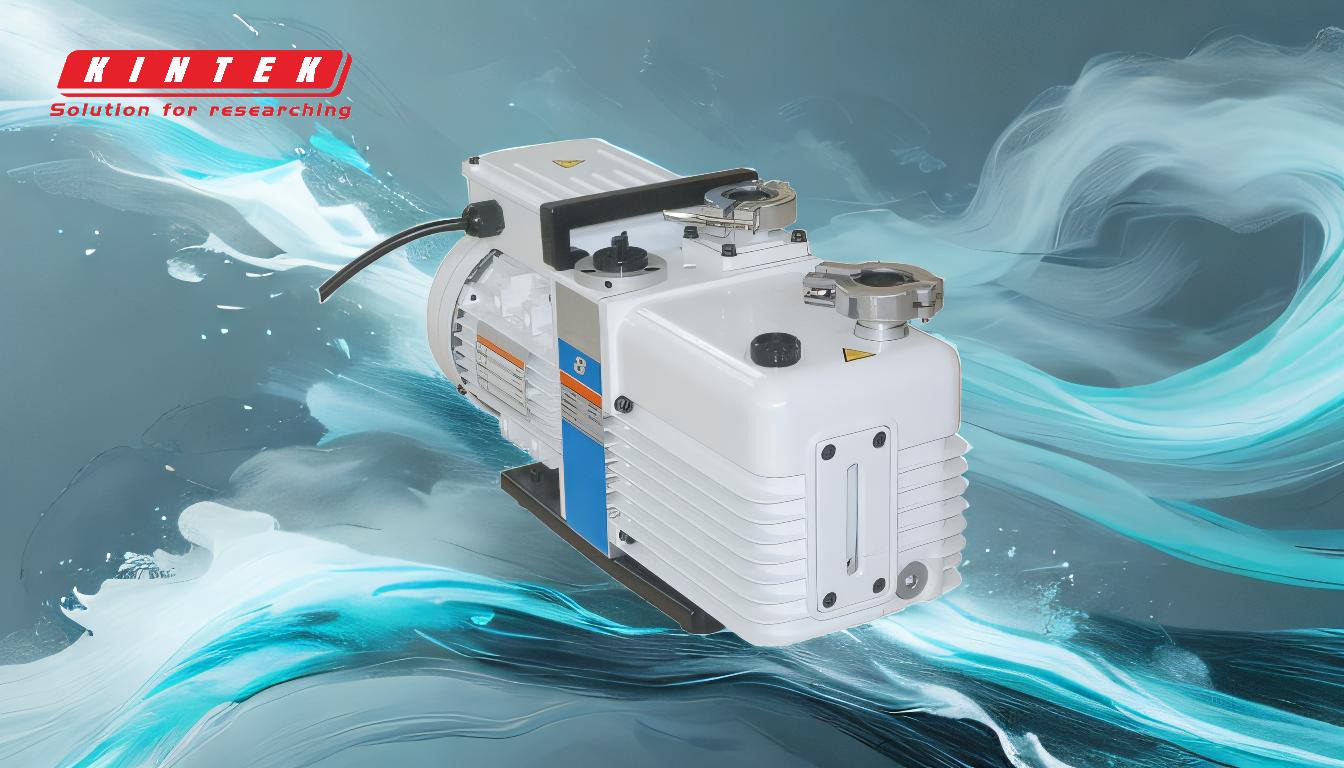A two-stage vacuum pump is designed to achieve higher vacuum levels and better performance compared to single-stage pumps. It operates using two sets of rotors and vanes, with one stage dedicated to creating a high vacuum and the other to compressing the gas to atmospheric pressure. This dual-stage design allows for improved vacuum performance, making it ideal for applications requiring ultra-high vacuum (UHV) levels. Additionally, two-stage pumps can be designed as dry systems, eliminating contamination risks associated with oil-sealed pumps, and are suitable for handling corrosive or viscous materials. Their efficiency, versatility, and ability to achieve deeper vacuums make them a preferred choice in industries like semiconductor manufacturing, research labs, and chemical processing.
Key Points Explained:

-
Dual-Stage Operation for Higher Vacuum Levels:
- A two-stage vacuum pump consists of two sets of rotors and vanes, enabling it to operate in two distinct stages: a high vacuum stage and a low vacuum stage.
- The high vacuum stage draws in process gas and transfers it to the low vacuum stage, which compresses the gas to atmospheric pressure.
- This sequential operation significantly improves vacuum performance, allowing the pump to achieve ultra-high vacuum (UHV) levels, which are essential for applications like semiconductor manufacturing, research, and analytical instrumentation.
-
Improved Efficiency and Performance:
- By separating the vacuum creation process into two stages, the pump can handle a wider range of pressures more efficiently.
- The first stage creates a high vacuum, while the second stage ensures the gas is effectively compressed and expelled.
- This design reduces the workload on each stage, leading to better overall performance, lower energy consumption, and longer pump life.
-
Dry Operation for Contamination-Free Applications:
- Two-stage vacuum pumps can be designed as dry systems, meaning they do not require oil for lubrication.
- Dry pumps eliminate the risk of oil contamination, which is a common issue with oil-sealed vane pumps. This is particularly important in sensitive environments like laboratories, food processing, and pharmaceutical manufacturing, where even trace amounts of oil can compromise product quality or experimental results.
-
Versatility in Handling Challenging Materials:
- Two-stage vacuum pumps are capable of handling viscous, acidic, and corrosive materials, making them suitable for industries like chemicals, cosmetics, and food processing.
- Their robust design ensures resistance to corrosion and chemical damage, which is critical when dealing with aggressive substances.
-
Lower Maintenance and Operational Costs:
- Dry two-stage vacuum pumps have fewer moving parts and do not require oil changes, reducing maintenance requirements and associated costs.
- While the initial purchase cost may be higher compared to single-stage pumps, the long-term savings in maintenance and operational efficiency make them a cost-effective choice.
-
Applications Requiring Ultra-High Vacuum (UHV):
- The ability to achieve UHV levels makes two-stage vacuum pumps indispensable in fields like semiconductor fabrication, space simulation, and advanced research.
- These applications demand precise control over vacuum levels, which two-stage pumps provide reliably.
-
Comparison with Other Pump Types:
- Compared to diaphragm pumps, two-stage vacuum pumps offer higher vacuum levels, making them suitable for more demanding applications.
- Unlike oil-sealed pumps, they avoid contamination risks and are easier to maintain, though they may have a higher upfront cost.
In summary, two-stage vacuum pumps are chosen for their ability to achieve higher vacuum levels, improved efficiency, and versatility in handling challenging materials. Their dry operation and lower maintenance requirements further enhance their appeal, making them a preferred choice for industries requiring ultra-high vacuum and contamination-free environments.
Summary Table:
| Feature | Description |
|---|---|
| Dual-Stage Operation | Two sets of rotors and vanes for high and low vacuum stages, enabling UHV levels. |
| Improved Efficiency | Reduces workload per stage, lowers energy consumption, and extends pump life. |
| Dry Operation | Eliminates oil contamination, ideal for sensitive environments. |
| Versatility | Handles corrosive, viscous, and acidic materials with ease. |
| Lower Maintenance Costs | Fewer moving parts and no oil changes reduce long-term costs. |
| Applications | Essential for semiconductor manufacturing, research labs, and chemical processing. |
Upgrade your lab or industrial setup with a two-stage vacuum pump—contact our experts today to learn more!








